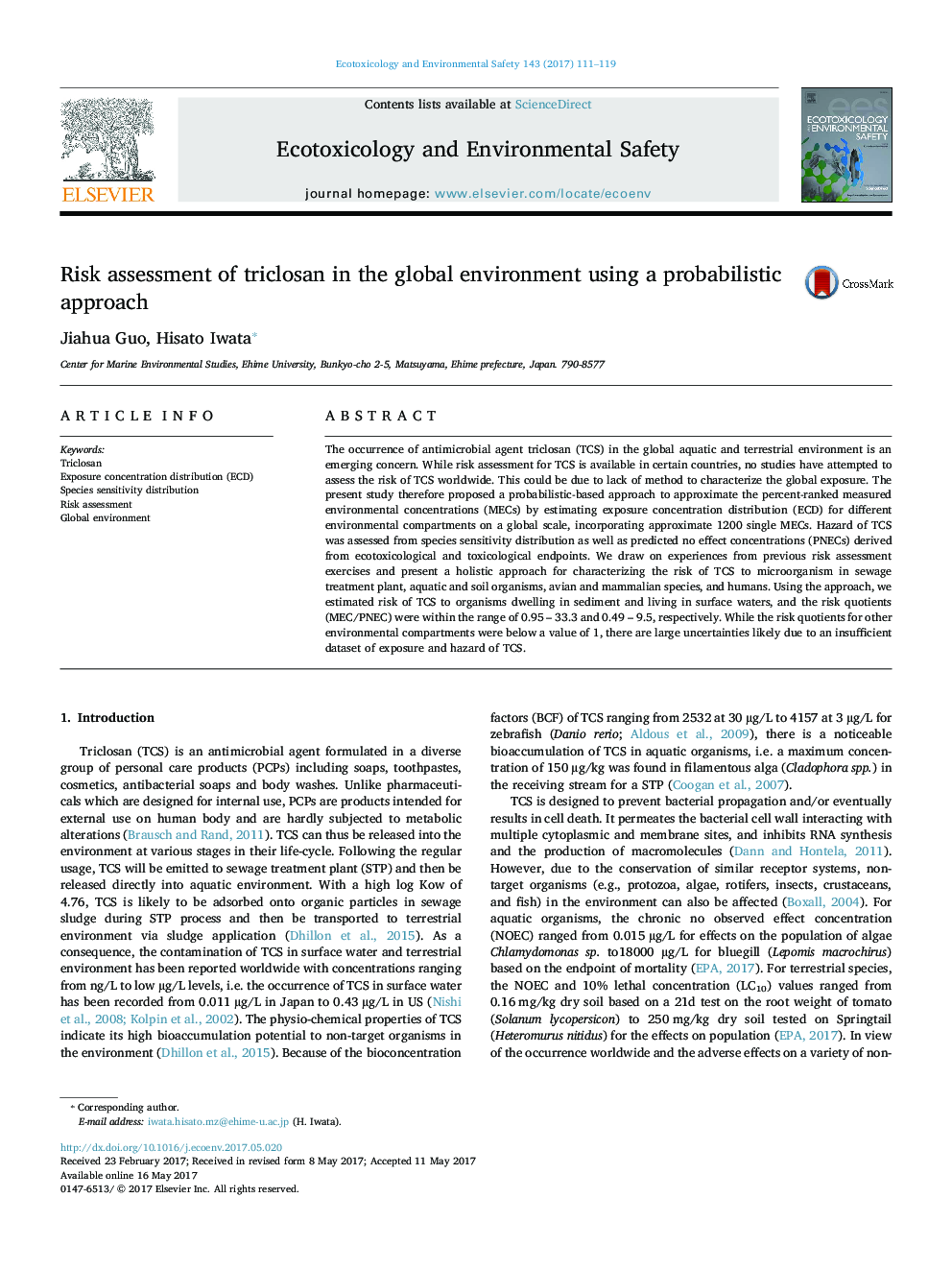| Article ID | Journal | Published Year | Pages | File Type |
|---|---|---|---|---|
| 5747580 | Ecotoxicology and Environmental Safety | 2017 | 9 Pages |
â¢Probabilistic-based approach using MECs well represents the global exposure to TCS.â¢Hazard of TCS can be characterized via construction of SSD curve.â¢Aquatic and sediment-dwelling species are under threat from exposure to TCS.â¢High uncertainty exists in the risk assessment of TCS on organisms living in soil.
The occurrence of antimicrobial agent triclosan (TCS) in the global aquatic and terrestrial environment is an emerging concern. While risk assessment for TCS is available in certain countries, no studies have attempted to assess the risk of TCS worldwide. This could be due to lack of method to characterize the global exposure. The present study therefore proposed a probabilistic-based approach to approximate the percent-ranked measured environmental concentrations (MECs) by estimating exposure concentration distribution (ECD) for different environmental compartments on a global scale, incorporating approximate 1200 single MECs. Hazard of TCS was assessed from species sensitivity distribution as well as predicted no effect concentrations (PNECs) derived from ecotoxicological and toxicological endpoints. We draw on experiences from previous risk assessment exercises and present a holistic approach for characterizing the risk of TCS to microorganism in sewage treatment plant, aquatic and soil organisms, avian and mammalian species, and humans. Using the approach, we estimated risk of TCS to organisms dwelling in sediment and living in surface waters, and the risk quotients (MEC/PNEC) were within the range of 0.95 - 33.3 and 0.49 - 9.5, respectively. While the risk quotients for other environmental compartments were below a value of 1, there are large uncertainties likely due to an insufficient dataset of exposure and hazard of TCS.
